The Ultimate Guide to White Sands National Park in New Mexico
White Sands National Park in New Mexico is one of those places I had always wanted to travel to, but had never had the chance. It's kind of in the middle of nowhere, at least for me. I'm sure it is somebody's somewhere.
Fortunately, we had a trip planned to climb at Hueco Tanks State Park near El Paso, Texas, and I found out that the White Sands National Park was only about an hour and a half from that climbing area. So Michael and I made sure to check out all the things to do in White Sands while we were in the area.
White Sands National Park (on Mescalero Apache and Tampachoa native land) is an extremely beautiful place and definitely worth the stop if you find yourself near southern New Mexico. The white sand dunes, comprised predominantly of the mineral called gypsum, are like nothing I've ever seen before.
We drove out there one early afternoon during our trip and spent our time hiking around, taking photos, and watching the sunset. I'm so glad we made the trip out there, even if it was only for the afternoon.
This post will cover everything you need to know about visiting White Sands National Park including when to go, what to bring, and all the things to do in White Sands. I feel like our visit to White Sand Dunes National Park was limited, but there is so much more you can do and explore there. If I could go back I think if would be particularly fun to do one of the longer hikes.
I would say that the photos don't do this place justice (as is often the case in many places we visit on our adventures), but I really have to make an exception here as I think that Michael really captured the beauty of this place very well! I hope you all get a chance to visit some time!
Please note that the below post may contain affiliate links.
White Sands National Park Overview
White Sands was designated a National Monument in 1933 and was redesignated as a National Park in 2019. The white sand dunes cover over 275 square miles of the Chihuahuan desert, and the National Park protects over half of the dunes. The sands are unique here because they are comprised of the mineral gypsum which gives them their uniquely white color. In fact, it is the largest gypsum dunefield in the world.
This beautiful oasis is ironically surrounded my military installations such as the White Sands Missile Range and the Holloman Air Force Base, so it is always important to check that there are no road closures to the area due to missile testing before you go visit.
There is an entry fee of $25 per vehicle to enter White Sands National Park. The fee is good for up to 7 days in the park, so keep your receipt if you plan to visit multiple days in a row. You can use an annual National Parks Pass if you have one.
And yes, pets are allowed, but make sure to keep them in control and on a leash.
GRAB MY [FREE] OUTDOOR BACKPACKER STARTER KIT
I created the Ultimate Outdoor Backpacker Starter Kit for you (and it's FREE)! This starter kit is filled with 14 pages of my best hiking and backpacking tips to help you learn what it takes to become a safe, confident, and self-sufficient outdoor backpacker!
How to Get to White Sands National Park
White Sands National Park is located in southern New Mexico. You can see in the map below that the closest "bigger" cities are Albuquerque, New Mexico (3 and 1/2 hours away from the park) and El Paso, Texas (1 and 1/2 hours away from the park). While it's not exactly super close to anything, it would make for a great stop on a US road trip if you happened to be driving through the area.
The sand dunes are located in the Chihuahuan Desert which expands into west Texas, New Mexico, Arizona, and Mexico, and they are surrounded by the San Andres Mountains (on the west) and Sacramento Mountains (on the east).
When to Visit White Sands National Park
The best time to visit White Sands National Park is the fall, winter, and spring. As with any desert, the temperature highs and lows have pretty big swings from mid-day to night time.
If you decide to visit in the summer, be prepared for extreme heat. The average high temperature at White Sands National Park is 97 degrees Fahrenheit in June and July, but the record high has been recorded up to 111 degrees Fahrenheit. Not as warm as Death Valley's highest recorded temperatures, but still extremely hot.
I've plotted the average low and high temperatures each month at White Sands in the graph below.
Late afternoon thunderstorms are most common during July through September, and the spring months can bring high winds (sometimes up to 50 mph) so definitely check the weather and current conditions before your visit. It wouldn't be a very fun visit with 50 mph winds with all that sand.
White Sands National Park is open every day except Christmas. The park opens each day at 7:00am, but the closing hours change depending on the season, so be sure to check the hours before you go.
Things to Do in White Sands National Park
There are so many fun things to do at White Sands, including some unique activities like dune sledding!
Hiking in White Sands
Hiking is by far the most popular activity to do at the White Sands National Park, and there are endless options! The park has 5 official trails (detailed below), and you can also "choose your own adventure" among the dunes. However, it's important to remember that it is very easy to get lost among the sand dunes, so be careful if you do decide to venture off the main trails.
Interdune Boardwalk: This trail is wheelchair accessible and is a short 0.4 mile trek out into the dunes via a wooden boardwalk.
Playa Trail: This trail is marked with green trail markers and is an easy 0.5 mile level hike through the playa. The majority of the year, the playa is a dry lakebed.
Dune Life Nature Trail: This trail is marked with blue trail markers and is considered a "moderate" 1 mile roundtrip hike through the dunes.
Backcountry Camping Trail: This trail is marked with orange trail markers and is 2 miles roundtrip. This is the same trail used to get to the backcountry campsites. On this trail you will hike over several steep dunes.
Alkali Flat Trail: This trail is marked with red trail markers and is considered the most difficult hike at the park. It is 5 miles round trip and is a strenuous trek up and down sand dunes the entire way.
Backcountry Camping in White Sands
Note: All backcountry camping in White Sands is currently closed for rehabilitation of the camping sites. There is currently no estimated date for reopening, but you can check the NPS site for updates..
White Sands National Park only allows for backcountry camping among the gypsum dunes - there is no car camping, or RV camping allowed. There are 10 formal backcountry campsites that require a 1 mile hike in to get to them. The hike is marked by orange trail markers to help guide you among the dunes to the backcountry campsites.
The campsites are not available for advanced reservation and are administered on a first-come/first-serve-basis. If you want to backcountry camp in the dunes, you must obtain a permit beforehand at the visitor center. Since it is easy to get lost in the sand dunes, there are "permit cut off times", and you must be at the visitor center before this time in order to be issued a permit.
In addition to the park entry fee, there is also a camping fee of $10 per site. Groups are limited to a maximum of 6 people per campsite/permit. Pets are also allowed to backcountry camp as long as they are kept under control and on a leash at all times during your visit.
Photography in White Sands
As you can see in this post, there are so many amazing opportunities for photography at White Sands National Park. There are tons of fun textures and patterns to play with. It's a photographers dream!
Here 5 tips to taking great photos during your visit to White Sands:
Try to find a spot a little "off the beaten path" so you can find some sand dunes that don't have footprints all over them. This way you can capture some of the beautiful designs that the wind naturally makes in the dunes. We didn't have to hike very far to find this.**
Find a cool sand dune "spine" to take photos nearby. This can provide an interesting dramatic effect with shadows at certain times of the day, particularly at sunset.
Take advantage of some of the natural plant life in the area to give your photographs more texture and depth, and to help frame your subject.
Have fun with all the shapes and curves that the dunes provide. Try getting different shots at different angles, and take advantage of the beautiful mountains that surround the dunes.
Take your photos during either sunrise or sunset! We took all of our photos in January at sunset.
**See safety section below for more details.
Driving Dunes Drive
Driving along the 16 mile round trip Dunes Drive road is another excellent way to see the park. The first four miles of road are paved and the rest of the road is tightly packed gypsum sand. Pair the drive with one of the mentioned hikes above and you will get to see a lot of what White Sands has to offer.
The entire drive takes around 45 minutes without stopping. Keep in mind you are only allowed to park in designated parking areas, so make sure not to pull over just anywhere on the side of the road.
There are also ample opportunities for picnicking along your drive. Along with 2 picnic areas at the visitor center, there are 3 more established picnic sites in the heart of the sand dunes drive. You could also take a picnic blanket and basket and enjoy your time away from the established picnic areas.
Cycling in White Sands
Bicycling through White Sands National Park provides a fun and unique way to see the sand dunes if you happen to have a bike with you. Although there is no "off-road" cycling allowed, you can ride your bike along the Dunes Drive road. Dunes Drive is 16 miles round trip, so be prepared for the mileage if you intend to bike the whole road.
Just remember that you are sharing the road with drivers, so always be alert and stay visible. Also, New Mexico law requires that anyone under the age of 17 must wear a helmet when riding a bicycle.
What kind of bike to bring? Only 4 miles of the road are paved and the rest of the road is tightly packed gypsum sand, so it is not recommended to bring a road bike that has skinny street tires. A mountain bike or cruiser bike with bigger tires will be a better choice for this road.
Horseback Riding in White Sands
There is also limited use allowed for horses and pack animals at White Sands National Park. Of course, you must provide your own horses, and they must be trailered into the park, but this is a neat way to see the park. Permits are required for personal use of horses and pack animals in the park, and you can find additional information here.
Dune Sledding in White Sands
Either way, it is endless fun for children and adults alike, and there are many sand dunes all over the park that offer excellent slopes to ride down. Just look for dunes that gently flatten out and always exercise caution when going down in a sled. Find more info about dune sledding at White Sands National Park here.
Regardless of what you decided to do at your visit to White Sands National Monument, you are sure to have a great time playing in the sand dunes!
Safety at White Sands National Park
While we’ve talked about all the fun things to do at White Sands National Park, it's also important to note a few key safety items to keep in mind during your visit to the park.
It's easy to get lost, and tracking your footsteps back may not always be reliable since there are often a ton of different tracks around the dunes and wind can easily erase foot steps. When we went out into the sand dunes, it wasn't very windy at all and we were paying close attention to where we were headed, but I noticed how easy it was to get turned around out there since it is almost impossible to see the road. If you are uncomfortable and want to be extra careful, follow the established trail markers into the dunes described in the hiking section. Also, it's a good idea not to hike alone in the dunes in order to help prevent getting lost.
Always bring water and food. You need plenty of water, especially during the summer when the park is very hot, and if you do happen to get lost, you want to at least have some food and water with you. Check out my post about essential hiking gear that you could adapt for short hikes in this area as well.
Don't just bring water, be sure to drink the water and take rests! This is particularly important in the summer and if you are going on one of the hikes or plan to spend a considerable amount of time out in the sun. Heat stroke can happen to anyone, and it is very important to stay hydrated. Electrolytes are also a good idea to replenish the minerals you lose when you sweat.
Protect your eyes! Just like the sun can reflect off of snow into your eyes, it can also reflect off of the white sand here, so be sure to bring some sunglasses for the hike. I took mine off for photos, but definitely carried a pair around with me in my pack.
What to Bring to White Sands National Park
If you are only going to the park for a day visit, here are a few of the essentials to bring on your trip to White Sand Dunes National Park:
5. Camera - Don't forget to pack a camera or a phone to capture your hike! You can read our post on the Outdoor Adventure Photography Gear we use if you want details on the cameras we recommend for outdoor photography, but also you can't go wrong these days with your phone camera either. Your choice!
For a comprehensive list on essential hiking gear that I recommend bringing on hiking trips, you can download my packing list below.
I hope by this point I've convinced you what an amazing place White Sands National Park is, and I really hope you get a chance to make a visit up there to explore and play in the dunes!
LOOKING FOR MORE NATIONAL PARK ADVENTURES?
Check out these resources below:
And Find more desert adventures Here!
Cheers,
Allison - She Dreams of Alpine
Did you enjoy this post on The Ultimate Guide to White Sands National Monument? If so, please take a moment to share it on Pinterest or other social media!



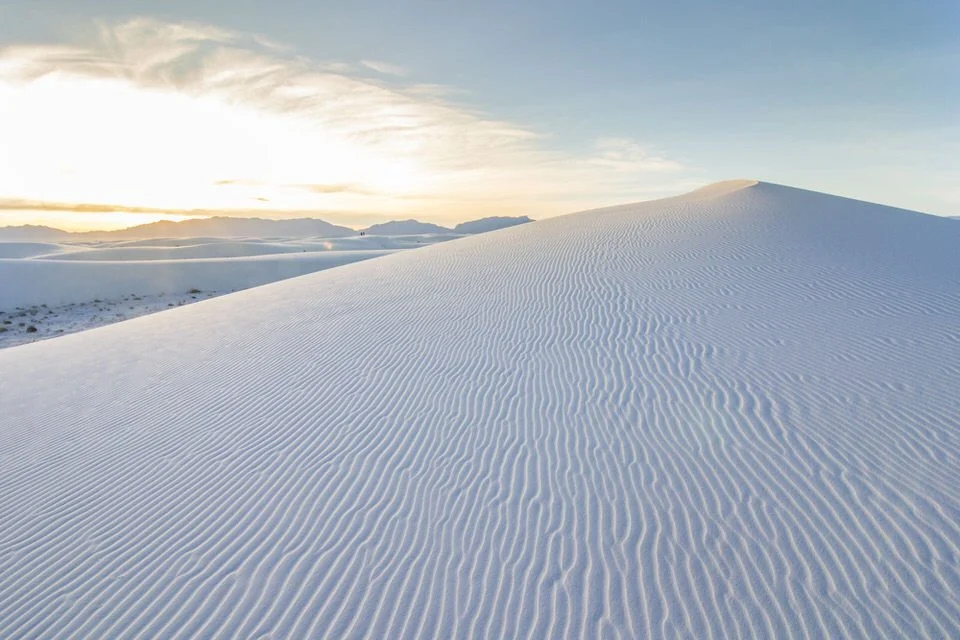
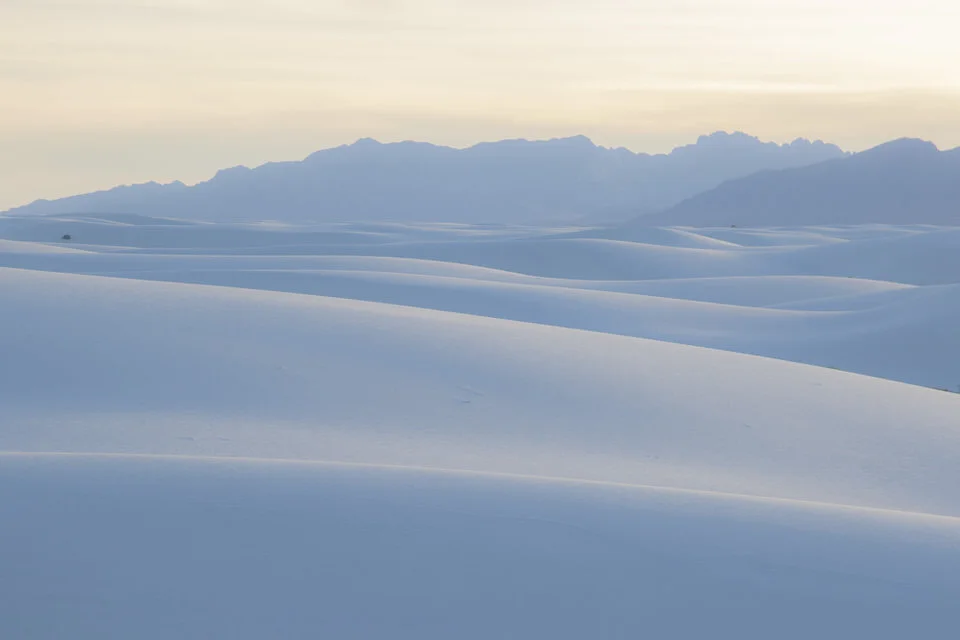

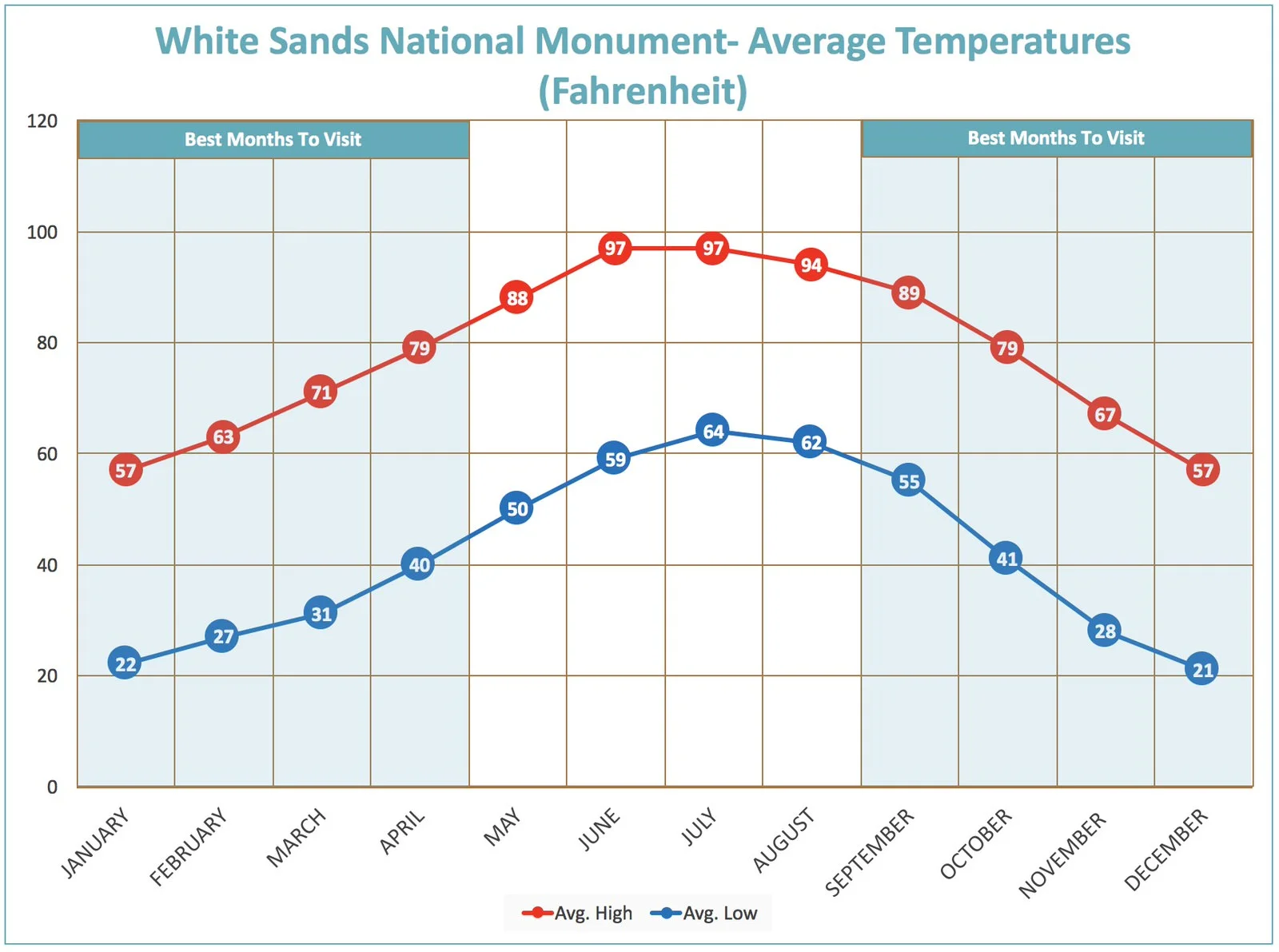


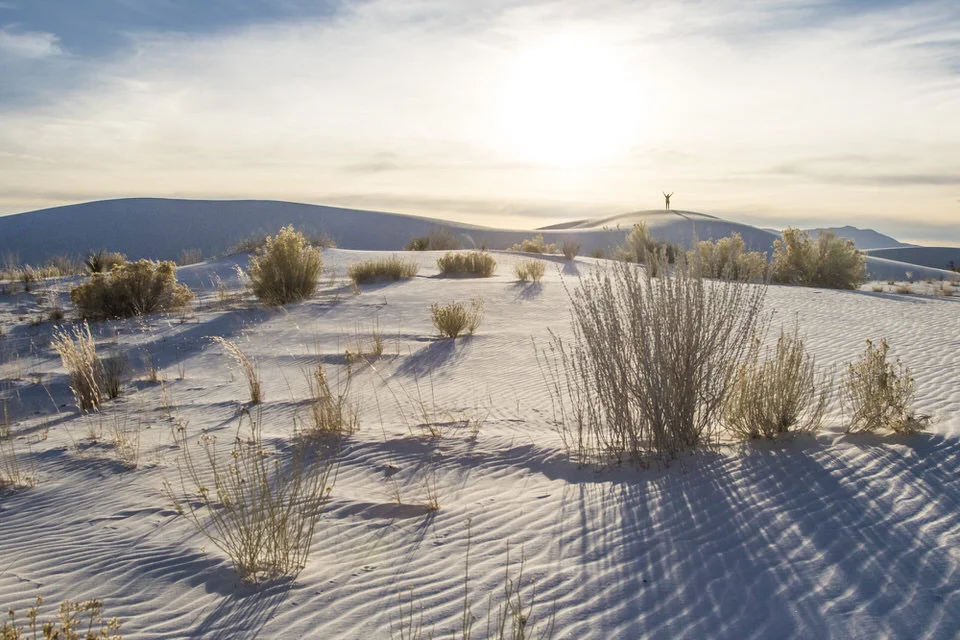
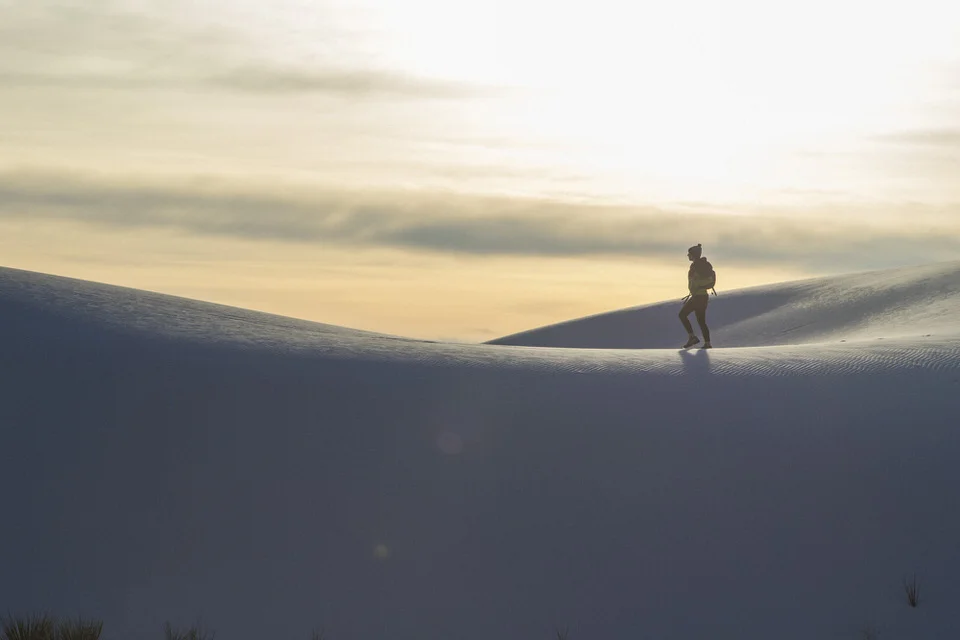




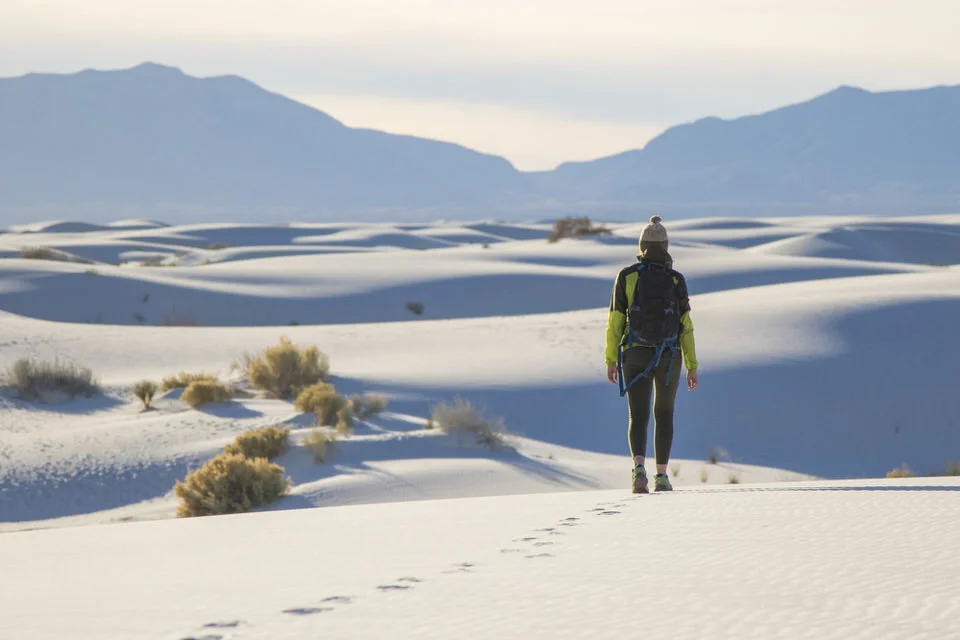
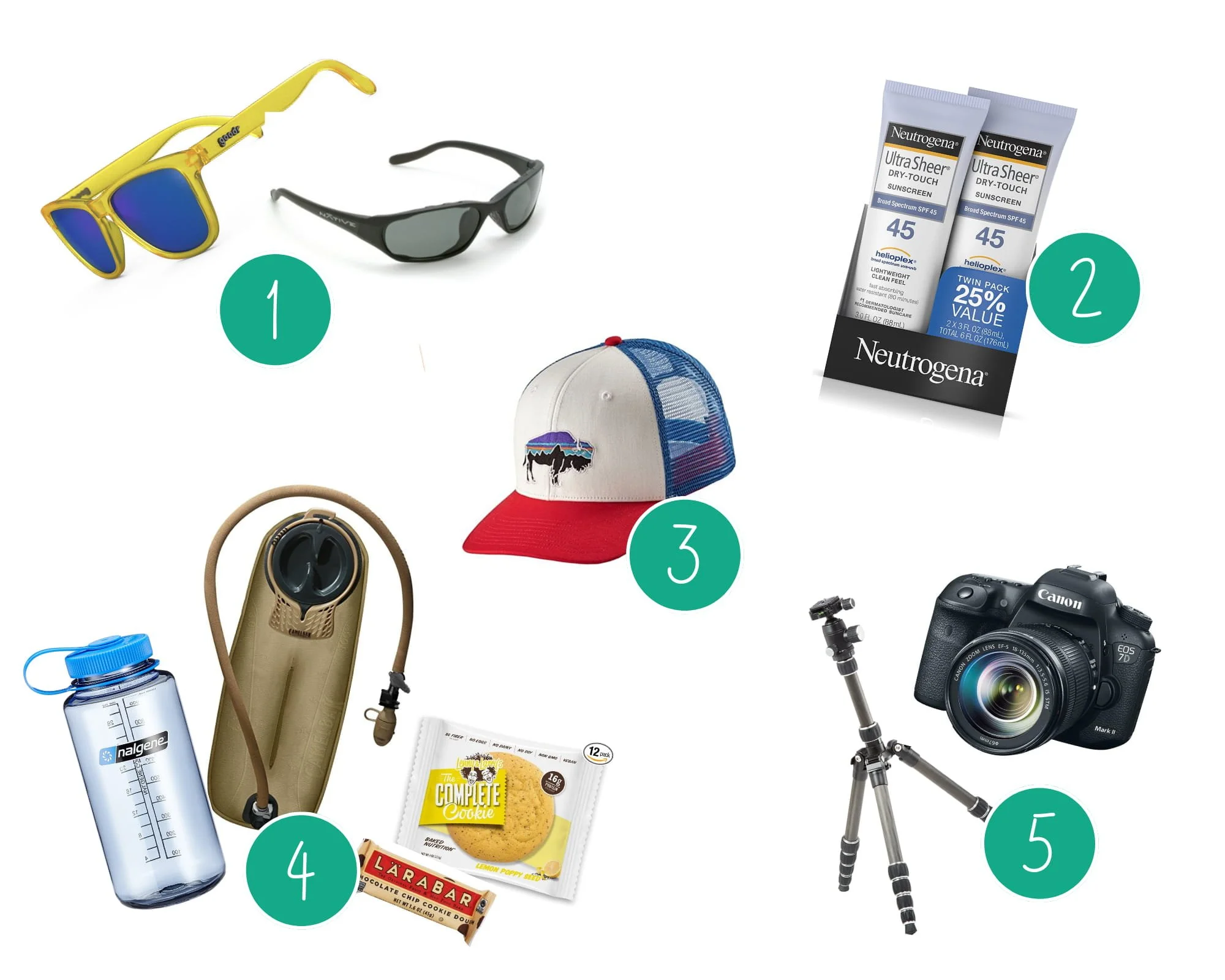
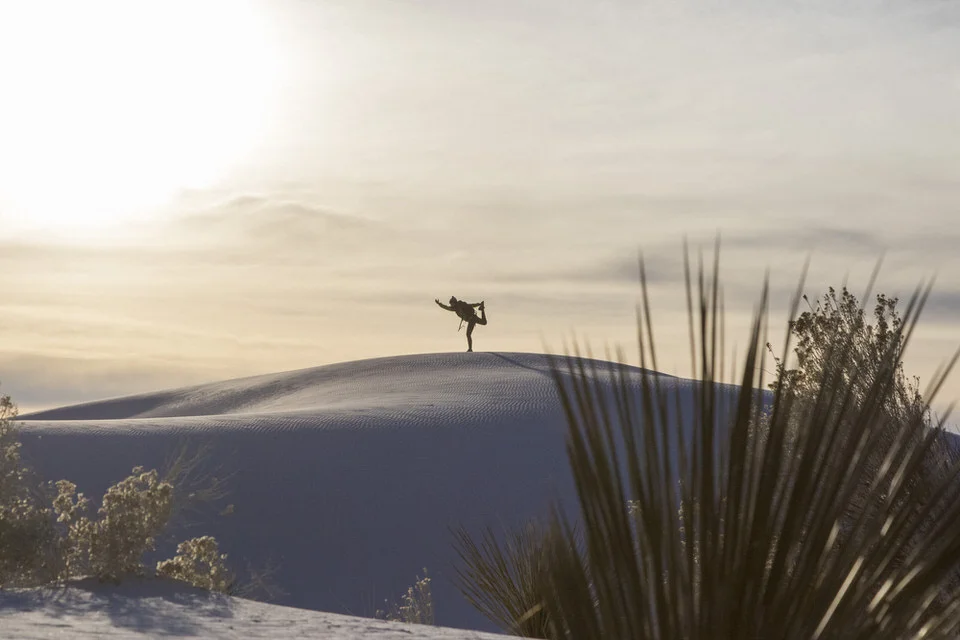

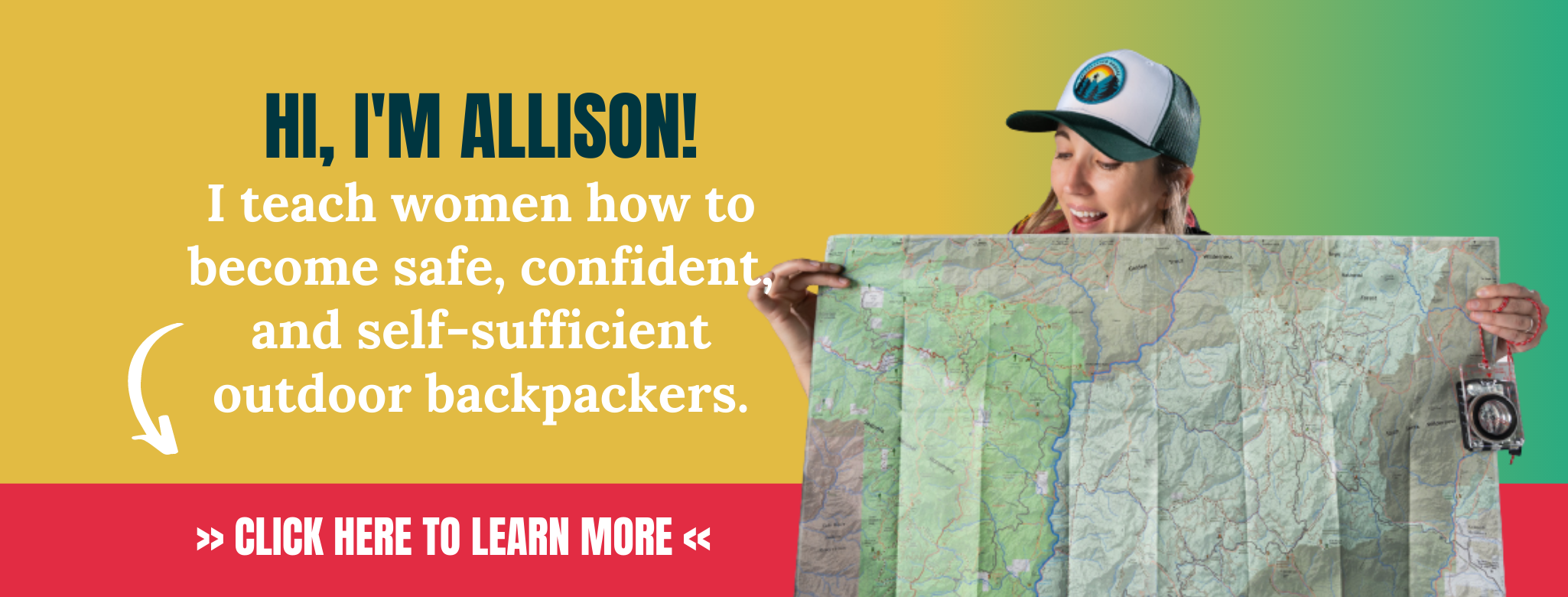


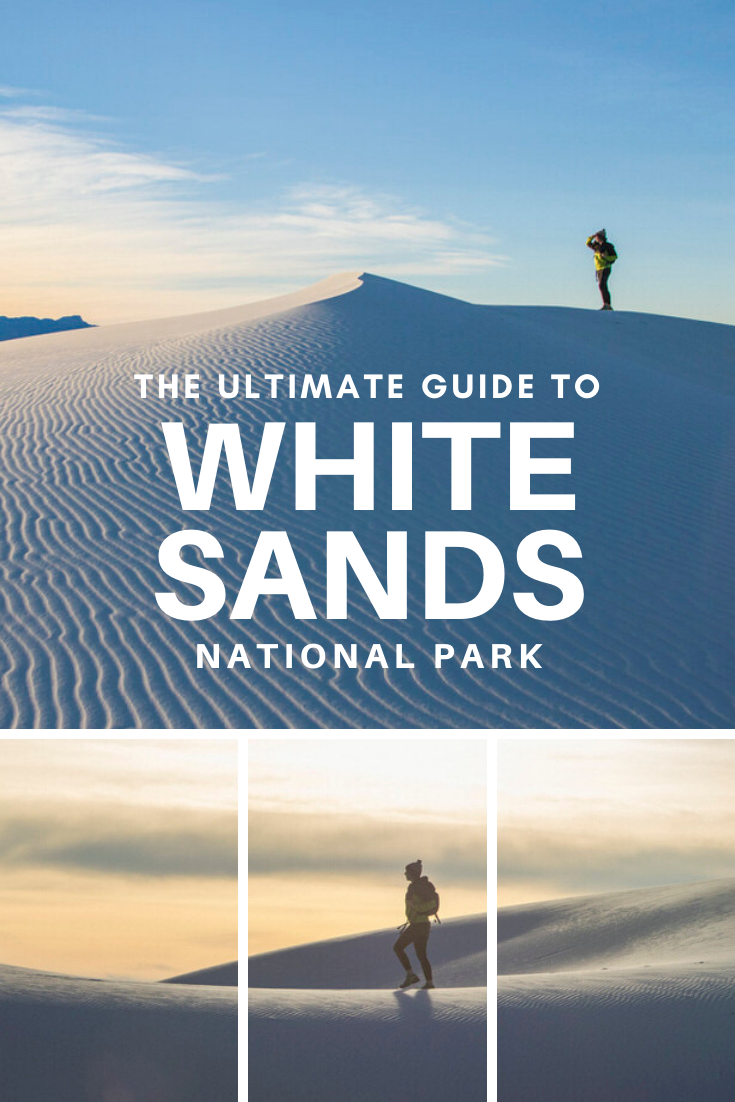
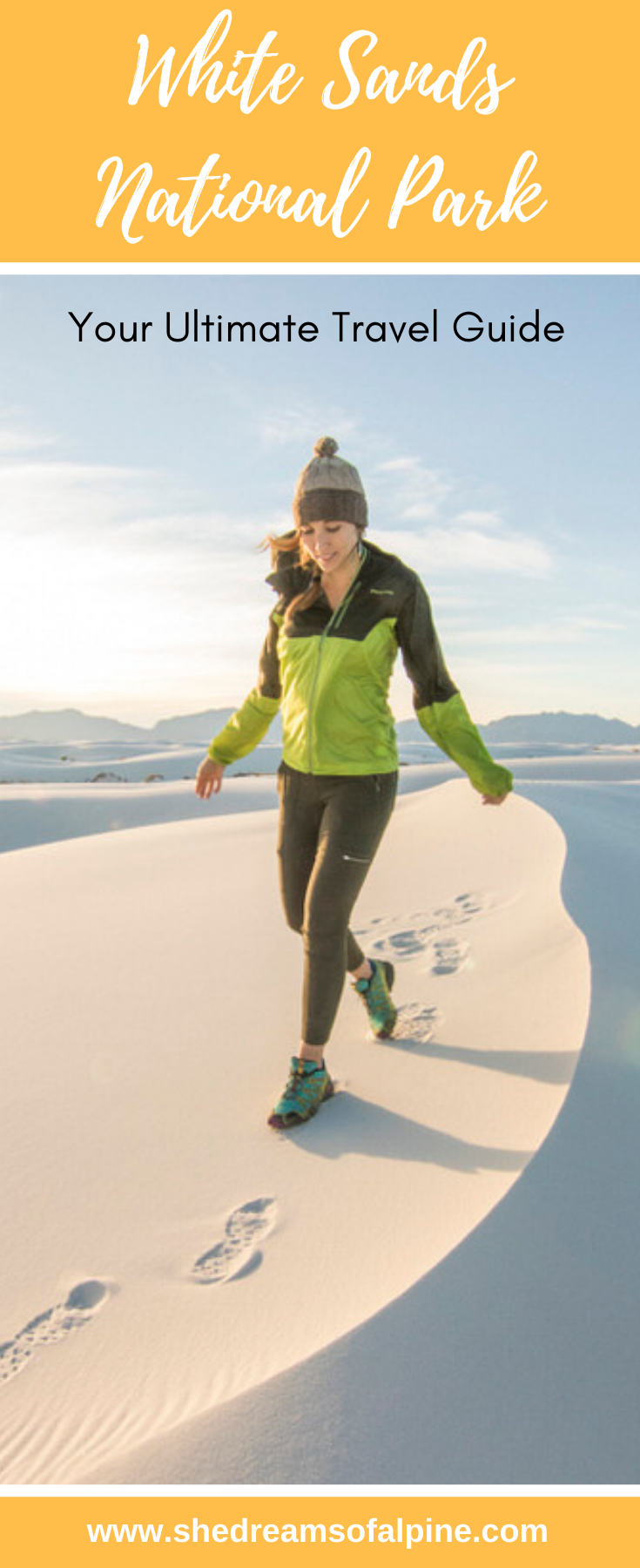
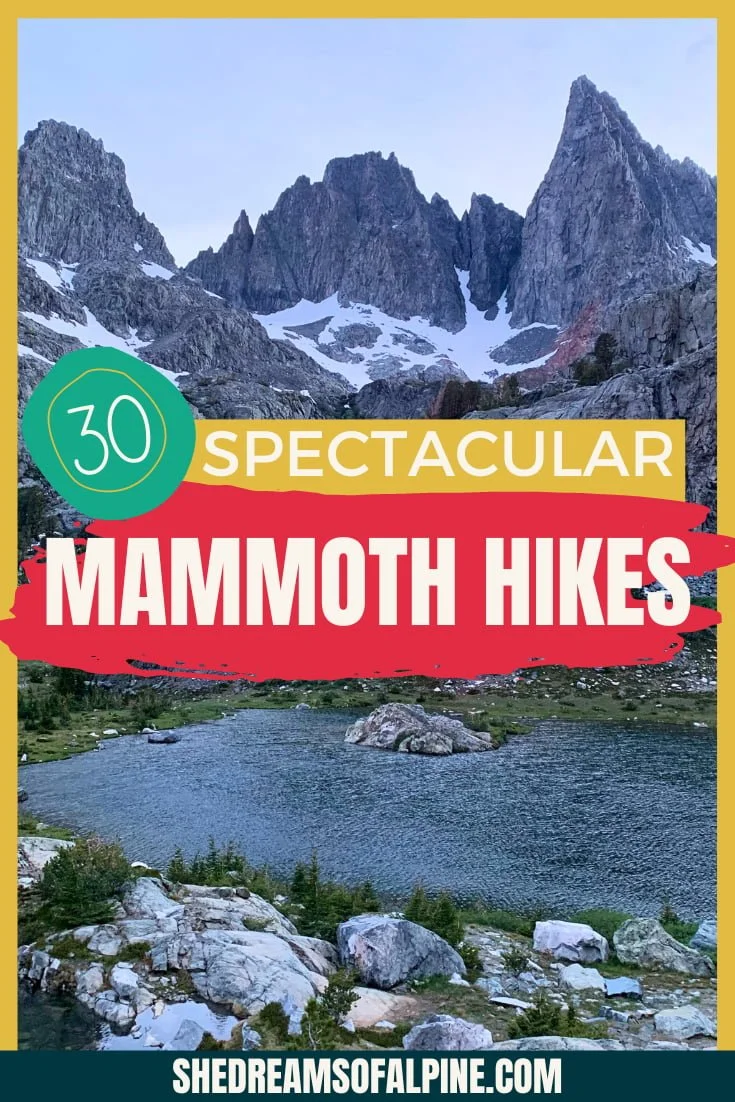
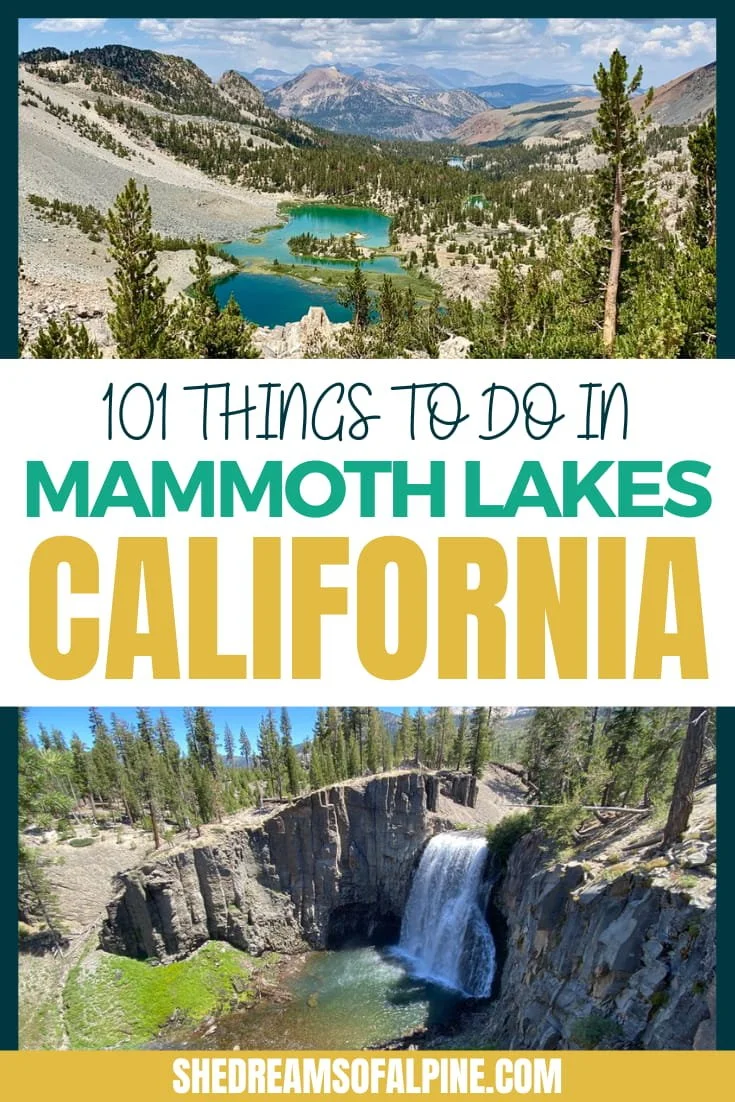





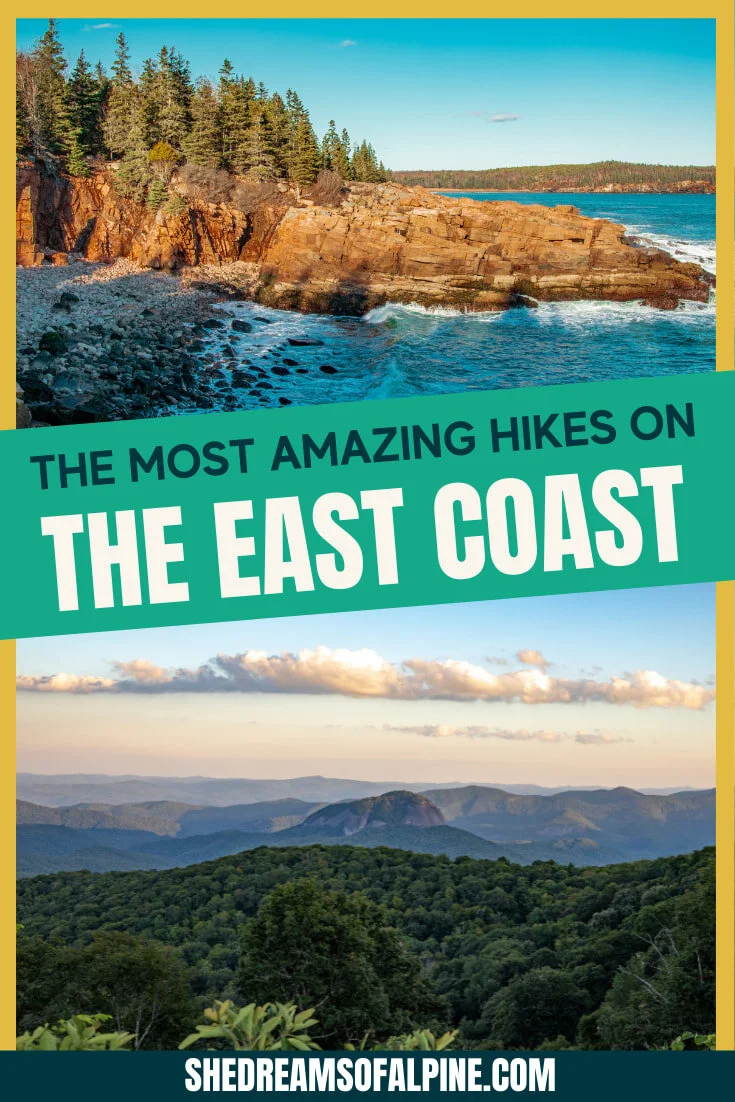
27 of the Absolute Best Hikes in Yosemite National Park to Put on Your Hiking Bucket List | Yosemite National Park is one of the most beautiful national parks in the entire United States, and one of the best ways to explore the park is via one the many amazing hiking trails. In this post, I’ve detailed 27 of Yosemite’s top hiking trails, ranging from difficult to easy, that give you epic views of Yosemite’s grand backcountry and some of Yosemite’s most famous landmarks. You’ll only fall more in love with Yosemite after going on one of these hikes! | shedreamsofalpine.com